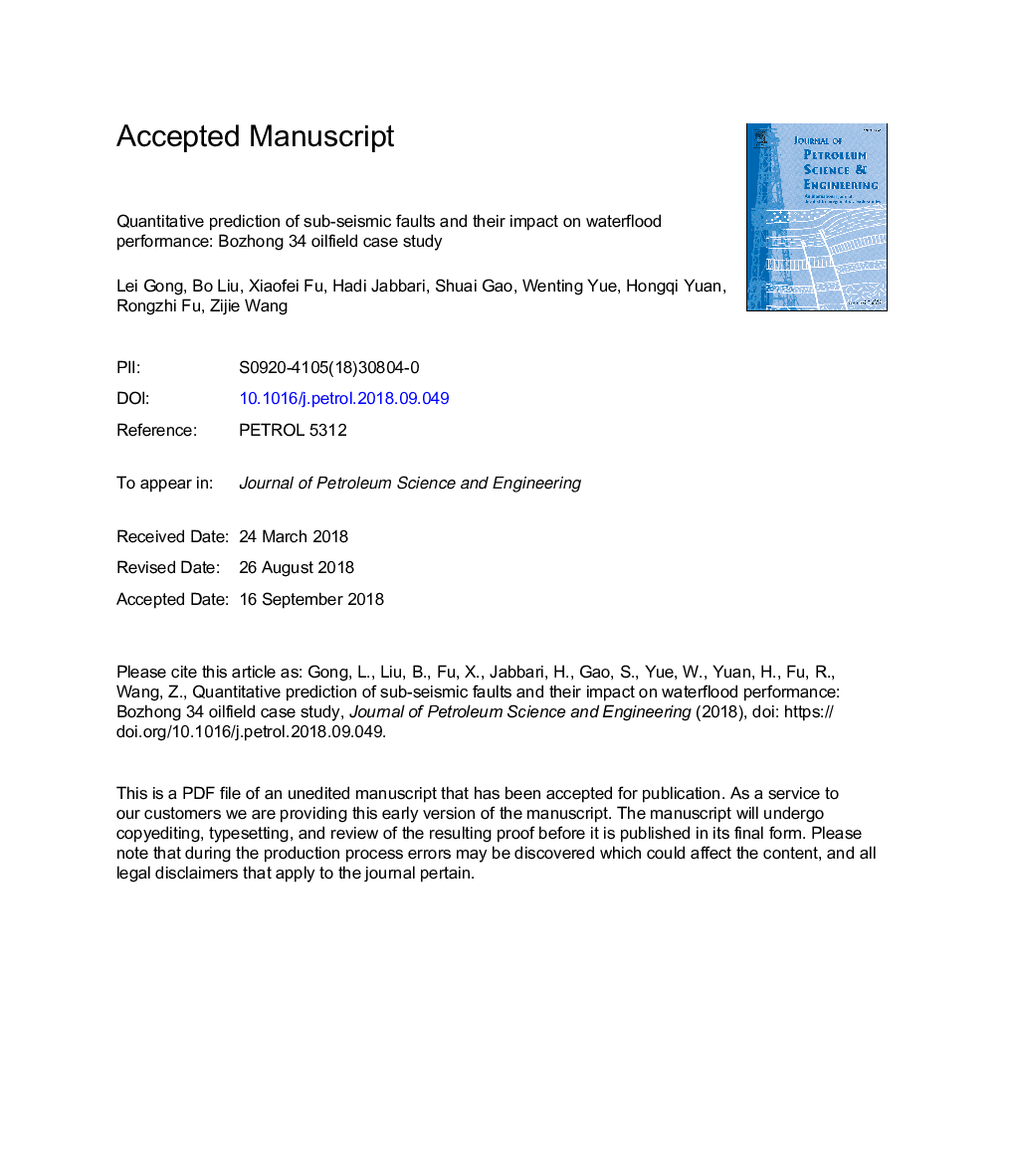| Article ID | Journal | Published Year | Pages | File Type |
|---|---|---|---|---|
| 10156369 | Journal of Petroleum Science and Engineering | 2019 | 17 Pages |
Abstract
Sub-seismic faults are the key factors that control the reservoir quality, hydrocarbon accumulation, and water injection development. In this paper, we developed a method to predict the number, size, orientation and location of sub-seismic faults based on the analysis of fault fractal growth patterns and three-dimensional (3-D) geo-mechanical simulation. This work also discussed the influence of sub-seismic faults on water injection development and remaining oil distribution from analyzing the dynamic oilfield development data. In the methodology developed in this study, the geometrical features of large-scale seismic faults were thoroughly explained based on 3-D seismic data. Based on fractal geometry theory, the number, length and throw of the sub-seismic faults were predicted by extrapolating the power law distribution of seismic fault parameters. According to the distribution of seismic faults, we established the 3-D geo-mechanical model and simulated the disturbed stress field near the seismic fault zone during faulting. By combining the simulation results with the failure criterion, the preferred failure orientation grids and maximum Coulomb shear stress grids were then established. Using these two grids and the parameters of sub-seismic faults constrained by the power-law distribution, we determined the stochastic model to predict the distribution of sub-seismic faults. This work shows that the distribution of sub-seismic faults can be effectively predicted by the combination of fractal theory and 3-D geo-mechanical simulation. Both key parameters in a typical waterflood process, namely the residual oil saturation and the performance of water injection, can be impacted by the size (throw) and the orientation of sub-seismic faults.
Keywords
Related Topics
Physical Sciences and Engineering
Earth and Planetary Sciences
Economic Geology
Authors
Lei Gong, Bo Liu, Xiaofei Fu, Hadi Jabbari, Shuai Gao, Wenting Yue, Hongqi Yuan, Rongzhi Fu, Zijie Wang,
